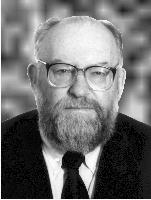
|
Biochemistry and Biotechnology of Inorganic PolyphosphatesI. S. Kulaev, Guest-EditorSkryabin Institute of Biochemistry and Physiology of Microorganisms, Russian Academy of Sciences, Pushchino, Moscow Region, 142292 Russia; fax: (095) 923-3602; E-mail: kulaev@ibpm.serpukhov.su
|
Received December 20, 1999
According to their significance for all living things, inorganic polyphosphates may be divided into two groups: pyrophosphates and high-molecular-weight polyphosphates, the latter containing three to several hundreds phosphate residues in one molecule. The functions of pyrophosphates and enzymes of their metabolism are greatly distinguished from those of high-molecular-weight polyphosphates and to-date they have been studied rather in detail. However, the same cannot be said of the high-molecular-weight polyphosphates. First revealed in living organisms (yeast) more than one hundred years ago, they haven't been investigated well enough. These mysterious cell components are still ignored in most textbooks of biochemistry. According to their significance for all living things, inorganic polyphosphates may be divided into two groups: pyrophosphates and high-molecular-weight polyphosphates, the latter containing three to several hundreds phosphate residues in one molecule. The functions of pyrophosphates and enzymes of their metabolism are greatly distinguished from those of high-molecular-weight polyphosphates and to-date they have been studied rather in detail. However, the same cannot be said of the high-molecular-weight polyphosphates. First revealed in living organisms (yeast) more than one hundred years ago, they haven't been investigated well enough. These mysterious cell components are still ignored in most textbooks of biochemistry.
At the same time, during the last ten years one of the impressive achievements was the elucidation of the functions (primarily regulatory) and intracellular localization of the high-molecular-weight polyphosphates and enzymes of their metabolism in organisms of different evolutionary stages. The most important finding in this field was a discovery by Rosetta Reusch (Michigan State University, USA), which proved the involvement of some high-molecular-weight polyphosphates in the formation of channels across the membranes of Escherichia coli. These channels are formed by polyphosphates and poly-beta-hydroxybutyrate with the participation of Ca2+. First Dr. Reusch and thereafter Arthur Kornberg proved that exogenous DNA was transported through the channels into E. coli cells competent for genetic transformation. Besides, Dr. Reusch revealed that these channels of non-protein nature were involved in calcium transport across membranes, including those of cells of higher animals. It appears that discovery of these channels was the main stimulus for Arthur Kornberg's return to studying the functions of polyphosphates and their metabolism again: he was the first to find 40 years ago a polyphosphate kinase, the most important enzyme of polyphosphate metabolism in prokaryotes. In the last few years a basis for a number of new lines in the study of high-molecular-weight polyphosphate metabolism both in prokaryotes and higher animals was laid in his laboratory at Stanford (USA). In particular, it was established that polyphosphates are directly related to switching-over of the genetic program characteristic of the logarithmic growth stage of E. coli to the program of slow cell survival under stationary conditions.
These and other not less important works of this laboratory gave an additional powerful impetus to rapid development in the field of biochemistry and biotechnology of polyphosphates throughout the world, including Japan (H. Ohtake) and Germany (H. Schröder).
In the last few decades, investigations on the use of polyphosphate-accumulating microorganisms for development of effective biotechnology as a tool for phosphorus removal from wastewater have been started in many countries of the world. With the help of gene engineering, bacterial clones have been created capable of accumulating polyphosphates in cells (~50% of dry cell biomass).
In Russia, where the first works on polyphosphate biochemistry appeared under the leadership of A. N. Belozersky more than 50 years ago, studies in this line are now underway in the laboratory of I. S. Kulaev. The most important achievement of this group is demonstration of substantial changes in the functions of polyphosphates and their metabolism in the process of evolution from prokaryotes to lower eukaryotes and finally, to highly organized living beings.
Recently, it was also established that in different organelles of eukaryotes the polyphosphate metabolism and enzymes participating in it could differ essentially.
As for works in the field of pyrophosphate biochemistry, the most impressive are studies on X-ray analysis and the kinetics of functioning of pyrophosphatases in bacteria and yeasts. The works of S. M. Avaeva and her school serve as an excellent example of such investigations.
The great progress made recently in the field of polyphosphate biochemistry is a major break in our knowledge about the functions and metabolism of these interesting phosphorus compounds. This has contributed much to the appearance of a special issue of the journal Biochemistry (Moscow) devoted to biochemistry and biotechnology of inorganic polyphosphates.